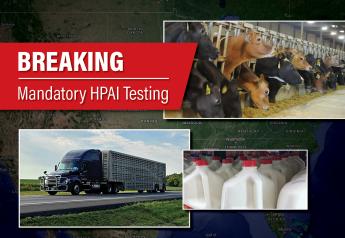Dan Murphy: Doctor’s Orders - Eat Meat!

A recent study that didn’t condemn red meat drew outrage from numerous self-proclaimed health authorities. But a prominent M.D. has now weighed in with the opposite opinion.
If you care to educate yourself about diet and health by seeking common sense recommendations, there are several sources of information.
First, you can while away your mornings as I do, by reading — well, skimming, anyway — scientific journals and research institute reports.
For example: A recent article in the Annals of Internal Medicine authored by 19 physicians, academic researchers and nutrition authorities titled, “Unprocessed Red Meat and Processed Meat Consumption: Dietary Guideline Recommendations From the Nutritional Recommendations (NutriRECS) Consortium.”
The article is some 5,000 words (and 12 pages of references) dissecting the researchers’ methodologies, discussing how evidence in the studies was evaluated and containing lots and lots of jargon about statistical analyses, levels of confidence and degrees of certainty in published data related to the correlations between dietary choices and health outcomes.
Here’s the recommendations those researchers arrived at (3,000 words into the article):
“The panel suggests that adults continue current unprocessed red meat consumption (weak recommendation, low-certainty evidence). Similarly, the panel suggests adults continue current processed meat consumption (weak recommendation, low-certainty evidence).”
That’s all good — I guess — but to paraphrase the well-known refrain, “With recommendations like that, who needs opposition?”
Reading the research reviews
A second source of information is the summaries and op-eds of such research that are published by mainstream media. Usually, these columns are written by someone with recognizable credentials, which bolsters the credibility of the organization publishing them.
For example: An opinion piece by Dr. Paul Hsleh, a diagnostic radiologist, who authored an article in Forbes titled, “I’m a Physician and I’ll Continue Eating Red Meat.”
Provocative, right?
Dr. Hsleh basically condensed the Annals of Internal Medicine study, noting that the researchers’ conclusion that people could continue current levels of red and processed meat consumption met with “fierce resistance from the American Heart Association, the American Cancer Society, and the Harvard T.H. Chan School of Public Health,” the latter of which officially labeled those recommendations “irresponsible and unethical” and argued that such a stance would “harm the credibility of nutrition science and erode the public trust in scientific research.”
Sorry, Harvard, but climate deniers already beat you to it.
In his review, Dr. Hsleh helpfully explains why the Annals researchers actually conducted a solid, scientifically valid study, the various authorities’ the-sky-is-falling-warnings notwithstanding.
Along the way, he made an important point about studies based on data compiled from what people SAY they’re eating, an assertion I’ve made so often I’d be proud to have it engraved on my tombstone: “Here lies a guy who understood that correlation ain’t causation.”
Or maybe something a little snappier.
But understand the importance of what Dr. Hsleh wrote, because research studies based on asking people what they eat, then linking that data to the incidence of heart disease, diabetes, cancer, etc., are unreliable.
“Observational studies are notoriously unreliable, in part because they are based on people’s reported recollections of what they ate — sometimes weeks in the past,” he wrote. “I sometimes have a hard time remembering what I had for dinner the night before, let alone three weeks ago!”
Amen to that, not to mention the “halo effect,” which refers to people’s tendencies to provide information that they think the researchers want, or that makes them look smarter, safer and healthier than they really are.
If someone asked a sample of adults to record how many alcoholic drinks they consumed in the last month (or year!), do you really believe A). people actually track that; and B). they would be totally honest about how much booze they’re sucking down?
Answer: No, I don’t.
Getting to the bottom line
Finally, there’s one other source of information on commonsense dietary recommendations: Me.
I don’t say that as if I’m some sort of expert, although I am a university-certified Community Health Educator. I make that assertion based on 35 years of wading through studies such as the one published in the Annals of Internal Medicine, along with reviewing literally thousands of articles such as the one written by Dr. Hsleh.
After decades of such toil, I’m an expert on sifting through scientific studies to ascertain the conclusions that researchers always couch in layers of technical verbiage so deep you’d need a metaphorical jackhammer to cut through it.
So trust me when I say that we can have a high level of confidence that consuming beef, pork and poultry isn’t the cause of modern society’s laundry list of chronic disease, based on millennia of human experience, based on the realities of human physiology and based on any and every definition of what’s natural and normal in terms of dietary choices and traditions.
Read the entire Annals report, if you like. It’s highly informative, in the same sense that paging through a dictionary is “informative” in regard to language usage.
Or look up Dr. Hsleh’s Forbes article. You’ll come away slightly more enlightened about scientific methodologies, such as the GRADE system, but it’ll be 30 minutes of your life you’ll never get back.
Or simply accept the truth that a healthy diet can and should include animal foods, with the understanding that the disease conditions responsible for the trillions Americans spend on healthcare are caused by everything else: consumption of junk foods and soft drinks, sedentary lifestyles, high-stress jobs, environmental pollution, exposure to toxic chemicals, and the list goes on.
Forget the “low-certainty evidence” of the research consortium and continue to include animal foods in your daily diets.
That’s not a cautious recommendation. That’s a no-brainer.
The opinions in this commentary are those of Dan Murphy, an award-winning journalist and commentator.
Related stories:







